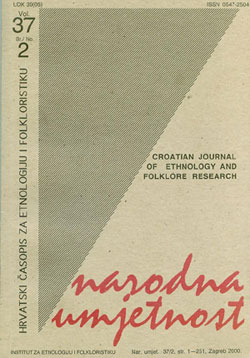Vedski obred u neohinduističkom kontekstu
Vedic Ritual in Neo-Hinduist Context
Author(s): Zdravka MatišićSubject(s): Cultural Essay, Political Essay, Societal Essay
Published by: Institut za etnologiju i folkloristiku
Keywords: neo-hinduism; vedic ritual; jyotiπtoma; Sankaracarya; Poona
Summary/Abstract: Vedas, the sacred books in which the religion of the Indo-European tribes which came to India is preserved in minute detail, gave their name to an era more than 3000 years old. This is not to say that the Vedic ritual which arose during that time disappeared with the Vedic Age. Quite the contrary, due to precise instructions in the texts as well as the uninterrupted oral tradition, Vedic rites, a relic of a long-dead era, continue to be performed in India even in the present day as the most sacred part of Hindu tradition. As might be expected, the tradition is now carried on only by scattered groups of brahmins throughout the country, so that for a given sacrifice, those brahmins who specialize in that sacrifice or a part of it will be called for, from whatever part of the country they live in. In Poona (Pune) from Monday, April 29, to Saturday, May 3, 1969 (a day of full moon), one of these Vedic sacrifices, a soma sacrifice (jyotiπtoma) was held. The article discusses this sacrifice at Poona, not from the standpoint of describing the ritual, but for the purpose of trying to convey to the reader an idea of the atmosphere of the ritual, the impressions it leaves on the observer, and perhaps something of the spirit of the ritual. On Friday morning, May 2, the Sankaracarya of Satara appeared in order that he might be paid homage. The dias on which he sat, was west to the sacrificial ground. After a group of priests who were also taking part in the sacrifice, chanted some Vedic mantras, another priest performed puja (act of worship of modern Hinduism). There was no integration of modern symbols of Hindu worship with the Vedic ritual. Even though they took place at the same time and the same place, and even the same priests were participating in both, foreign observers felt them as entirely alien to each other.
Journal: Narodna umjetnost - Hrvatski časopis za etnologiju i folkloristiku
- Issue Year: 37/2000
- Issue No: 2
- Page Range: 121-132
- Page Count: 12
- Language: Croatian

